-
Home
-
Architects
- Officer Woods
Officer Woods
Western Australian architecture studio Officer Woods embraces the state’s beautiful but sometimes unforgiving landscape to create buildings of raw beauty.
Words: Shelley Tustin.
Photography: Robert Frith
Edition 134
Oct 2025
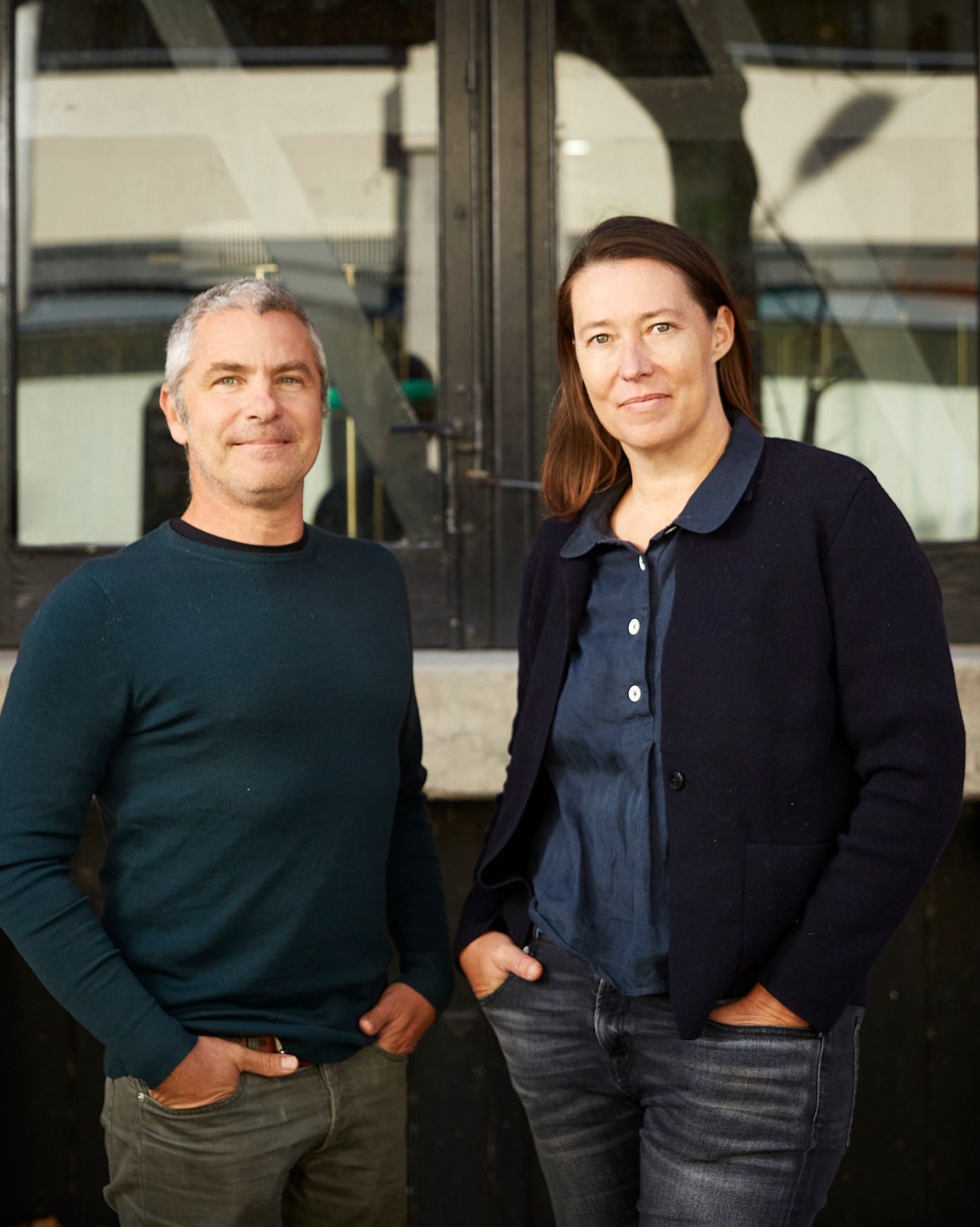
The founding directors of Western Australian architecture studio Officer Woods discuss how steel helps them overcome the challenges of the state’s beautiful but often unforgiving landscape.
Selecting materials is a task never taken lightly by Fremantle-based practice Officer Woods Architects. Yet, faced with challenges including dust, cyclonic winds, termites and unfathomably remote sites, steel is a game-changer and the backbone of many of the firm’s multi-award-winning projects.
A love of the land is seared bone-deep into the DNA of founding directors Jennie Officer and Trent Woods. Both were raised in Western Australia, studied at The University of Western Australia (where they met and fell in love, and where Officer also works as a practitioner and academic) and built their careers here, before joining forces to establish their practice in 2007. It was the right time for the pair to strike out on their own, says Officer.
“Both of us got to a point in our careers where we started – probably quite annoyingly for employers – saying, ‘I wouldn’t do it that way if it was me.’ Both of us felt a need to address those niggling questions: ‘If you could do it another way, how would you do it?’ ‘What do you believe in and where is your compass, architecturally?’”
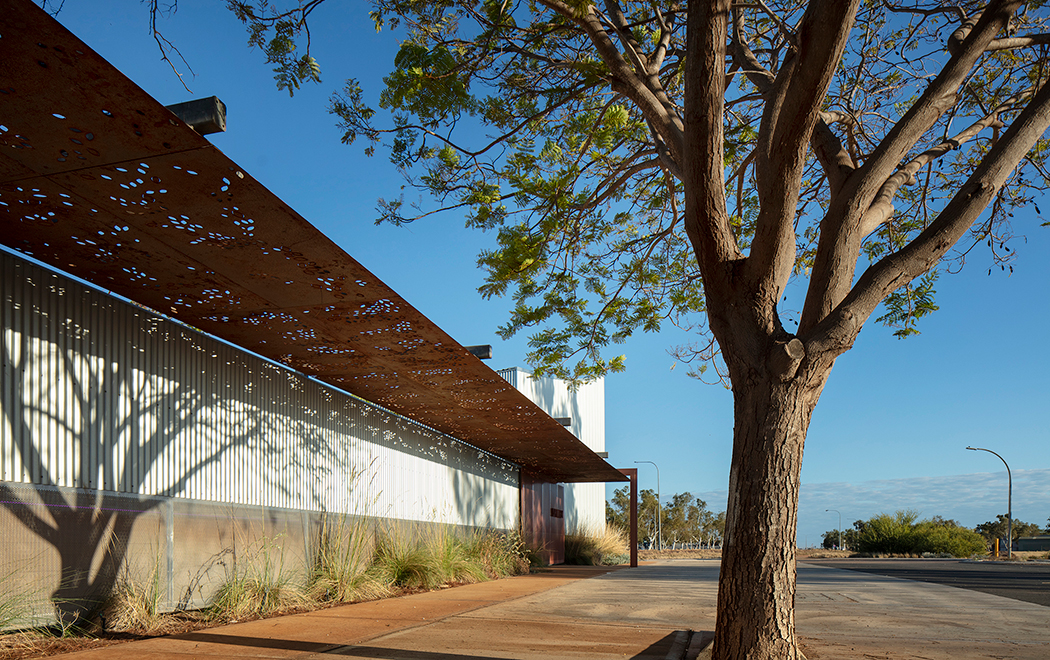
While Officer and Woods say they’re not driven to break boundaries for the sake of it, having their own practice grants them much-appreciated freedom to choose their projects and engage with unique challenges. “We’re interested in both the poetics and the technics of architecture – the pragmatism of where we come from and the materials that can be used, the DIY attitude that’s informed post-colonial Australia,” says Officer. “It’s the technical and pragmatic aspects of architecture that inform our ideas. We like the ‘working out’ of things.”
There is certainly plenty of ‘working out’ to do, with many of Officer Woods’ projects throwing up challenges unique to Western Australia’s vast, stunningly beautiful but sometimes unforgiving landscape. The studio’s regional work, particularly, is well suited to steel, relying on its strength and durability and, fundamentally, its transportability.
“Steel suits our technical mode of practice,” says Trent Woods. “We 3D model everything, we’re highly accurate in the way we work and steel is a good material to work like that. We know that we can design something here, and even if it’s complex – like the girders for Spinifex [Hill Project Space], which had an interesting form and shape and could be manufactured within very, very small tolerances. We can see them as components within the model and know they’re all going to fit without complication at site or cost implications for the client.”
In addition, steel has been a pragmatic choice for ongoing maintenance: robust and easy to replace if needed. “If it does get hit by a bit of flying debris in a cyclone, you can take off a sheet [of steel] and replace it. And because it’s fixed with mechanical fixings, it’s not necessarily an expert’s job to maintain steel-clad buildings,” says Officer, pointing out that builders simply may not be available for such tasks in remote areas.
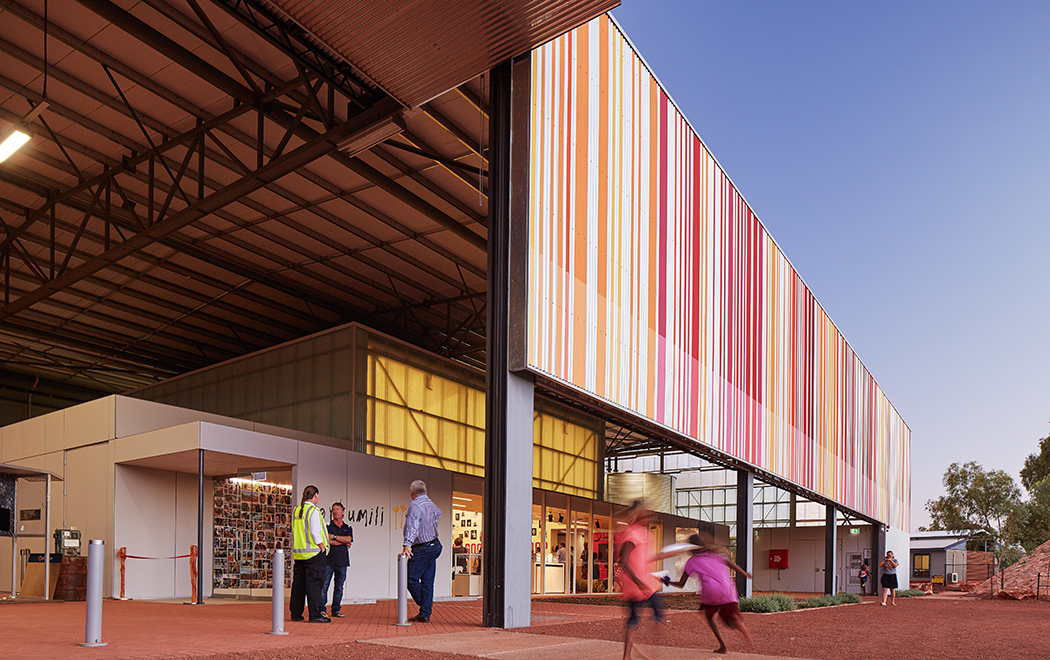
Steel has been not only a practical choice but also an aesthetic one, with its use extending beyond roofs (“Have we ever clad a roof that’s not steel?” muses Officer) to include cladding on both large-scale public buildings and single residential homes. A notable example of the latter is Rule Street House in Fremantle, which uses ZINCALUME® steel as a principal cladding material. It was shortlisted for the 2024 National Architecture Awards – Residential Architecture, Houses (New).
Both Officer and Woods express a particular love of steel, often taking this ubiquitous form and elevating it into a project-defining thing of beauty. “We love ZINCALUME® steel for its soft reflectivity – it takes on its surroundings in different light conditions. It can subtly reflect trees and shadows and dappled aspects of the world around it, and it’s often the colour of the sky,” says Officer.
Steel is used to most dramatic effect on their large-scale public buildings, including the Spinifex Hill Project Space in the Pilbara, which was awarded the 2024 COLORBOND® Award for Steel Architecture. This multipurpose exhibition space and cultural centre achieved a highly technical, cyclone-proof design, encased in a geometrically complex shell of steel, which seamlessly clads both roof and walls.
“We wanted it to be an obscure, ambiguous object,” reflects Woods. “Its shape changes as you go around it, and it’s kind of unknowable as a complete thing from any one side. Part of that is achieved by the roof and the walls being the same material, with no penetrations.”
“We 3D model everything, we’re highly accurate in the way we work and steel is a good material to work like that.”TRENT WOODS Officer Woods
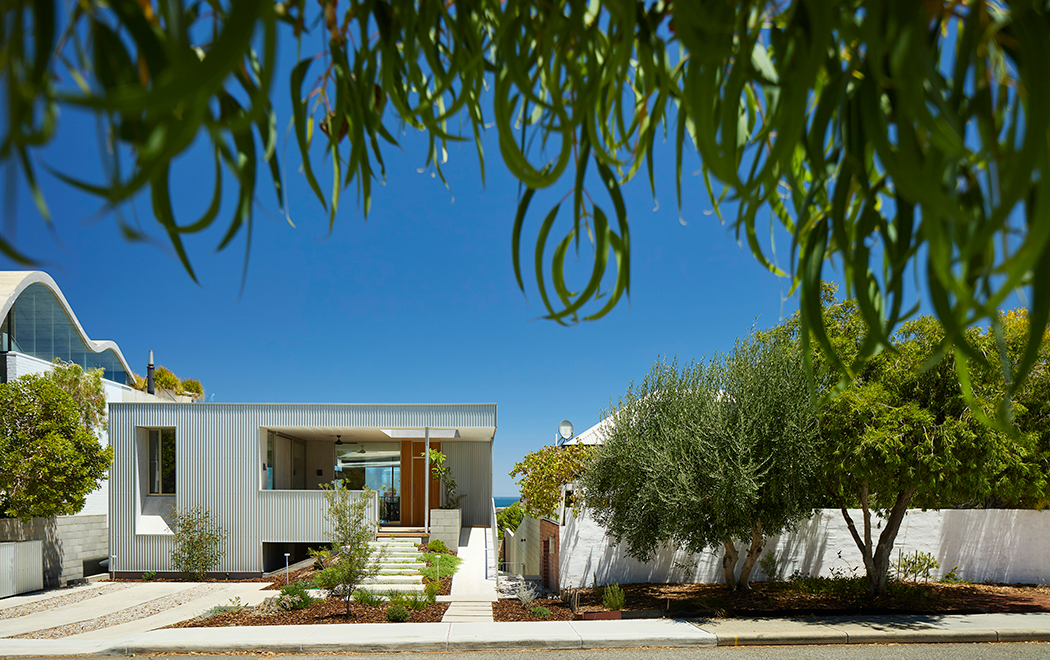
Steel cladding also features prominently in the East Pilbara Arts Centre in Newman, one of Officer Woods’ defining projects, which earned the 2017 National Australian Institute of Architects Sir Zelman Cowen Award for Public Architecture. “We won it with quite a radical idea about building a massive shed, which tied into the industrial nature of the place and the remoteness of the building technology that was available,” says Officer, who describes the large steel-framed building as like a set of Russian dolls.
A gallery space is securely nestled at the heart of the structure, surrounded by multiple covered and uncovered, open and enclosed spaces to cater for the varied work of the Martumili Artists. The building also serves as a gathering space for the town of Newman, located on the traditional Country of the Nyiyaparli People.
“That’s a huge change in the psychology of that town and also for those people – to know that they are welcome there, that everyone is meeting effectively on their turf. Being part of that has been incredibly rewarding for us,” says Woods.
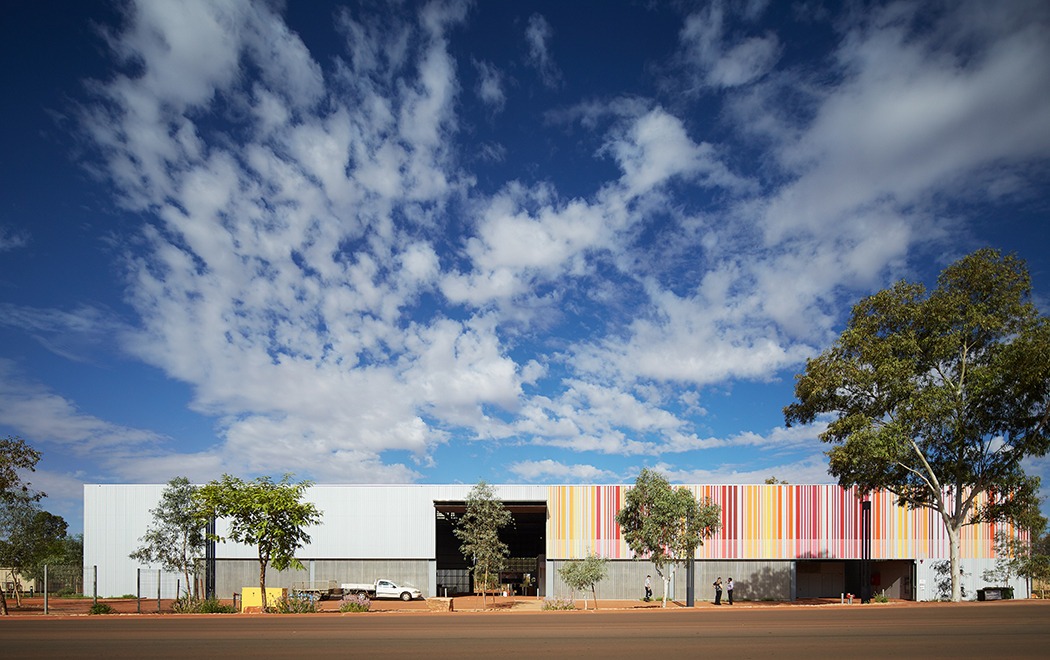
“We love ZINCALUME® steel for its soft reflectivity – it takes on its surroundings in different light conditions.”
JENNIE OFFICER Officer Woods
This idea of an architectural project contributing more than the sum of its parts is a recurring theme throughout the work of Officer Woods. Each design is considered for how it will not only meet the brief but also contribute to its context – visually, architecturally and culturally.
“One of the things we always try to do is identify how that project contributes to a broader spectrum,” explains Woods. “For instance, if you were to do a house – [you would ask] how does the house contribute to the street, how does the street contribute to the city? And the same goes with public buildings – what is the public building offering back to its direct address and its broader cultural context?”
While designing architecture – particularly in far-flung regions of Western Australia –comes with plenty of challenges, Officer reflects on “the grounding power of local cultures and landscapes” and the “spiritual satisfaction” of creating standout buildings within this context.
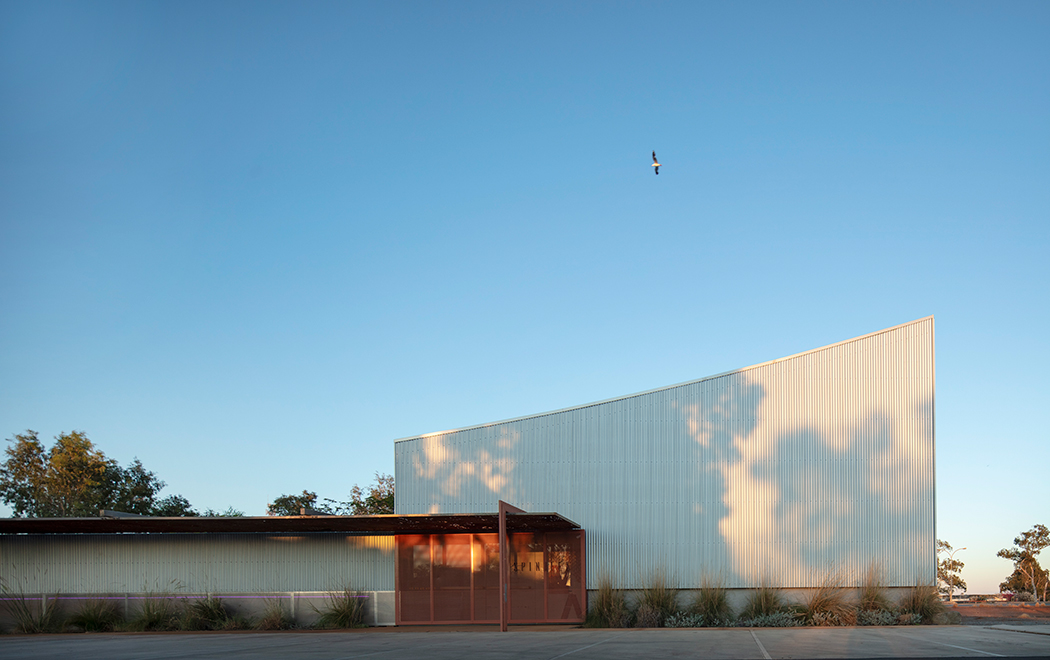
Architect information
Architect
Officer Woods
Website
Copyright © 2025 BlueScope Steel Limited ABN 16 000 011 058. All rights reserved.
No part of this publication may be copied, reproduced or distributed without consent. BlueScope Steel Limited, to the extent permissible at law, is not liable to any person for loss or damage arising from reliance upon information contained in this publication. The articles featured in STEEL PROFILE® are sourced, written, fact checked and curated by The Local Project with editorial contribution from BlueScope Steel Limited. Any statements or opinions attributed to a person are the views of that person alone. The decision to use any particular product or material in the projects featured in this publication was made by the team involved in each project and not BlueScope Steel Limited. While care has been taken to verify the accuracy of details in this publication, BlueScope Steel Limited assumes no responsibility or liability for any errors or omissions in the content of this publication. All information is provided with no guarantee of completeness or accuracy.
Images shown throughout have been reproduced to represent actual product colours as accurately as possible. However, we recommend checking your chosen colour against an actual sample of the product before purchasing, as varying light conditions and limitations of the printing process may affect colour tones.
Every project is different and not all products are suitable for all applications, projects and environments. Some products may perform better than others in certain applications and conditions. BlueScope generally recommends the use of COLORBOND® steel or ZINCALUME® steel for the majority of external cladding applications.
BlueScope recommends routine preventative maintenance for eaves and other “unwashed areas” of structures which may not be regularly cleaned by rainfall. To determine the most suitable material for your project, please contact your supplier or see steelselect.com.au. For information about product maintenance, including preventative maintenance, please call BlueScope on 1800 064 384. To determine whether a warranty may be available for use of a product in your particular project, please visit warranties.bluescopesteel.com.au or call BlueScope on 1800 064 384.
COLORBOND®, ZINCALUME® and ® colour names are registered trademarks of BlueScope Steel Limited.
If you have any questions, you can contact us at steeldirect@bluescopesteel.com.
